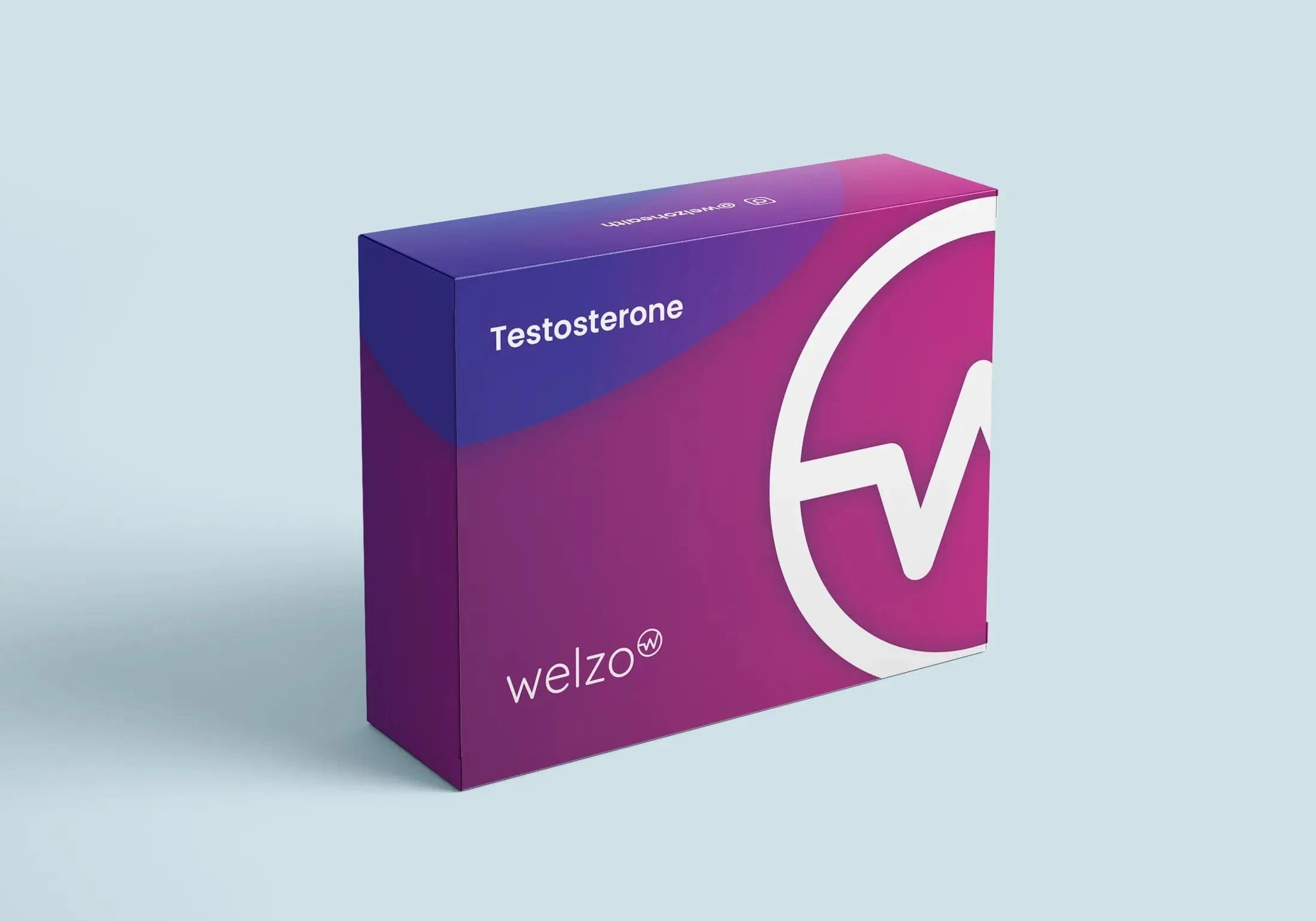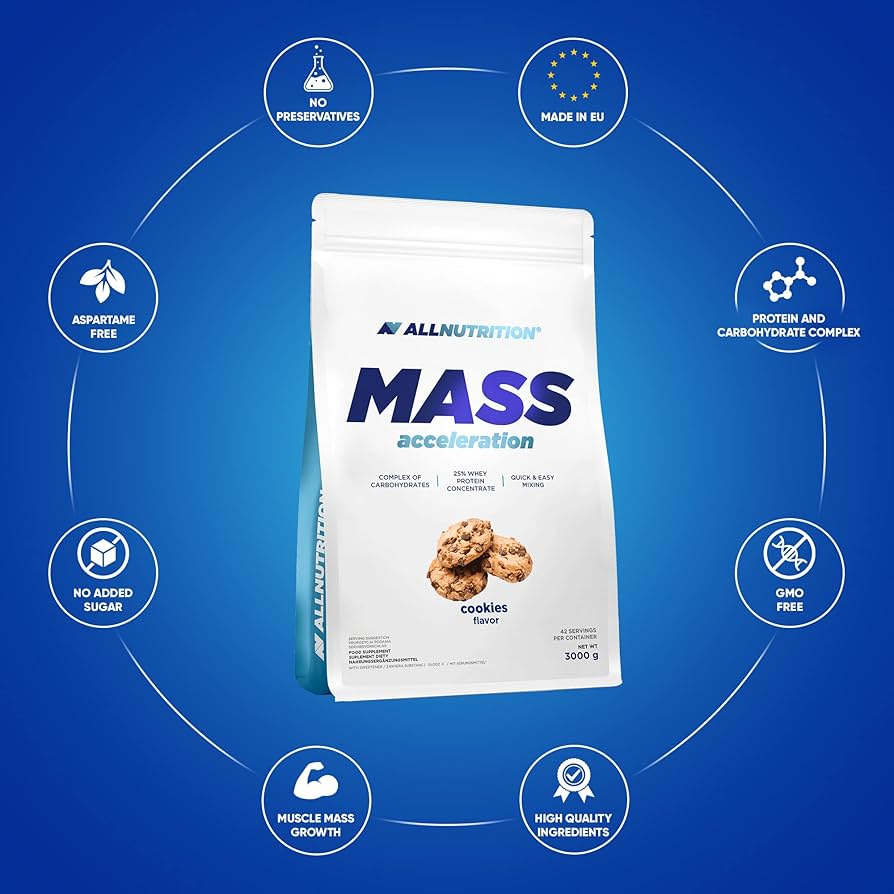
 Instagram
Instagram
Related products
How Testosterone Levels Influence Body Fat Distribution


Related products
What is testosterone and its significance in the body?
Testosterone, right at the outset, is a primary male sex hormone, crucial for numerous functions in the body. Produced mainly in the testicles of men and in smaller amounts in women’s ovaries, it's responsible for the development of male sexual characteristics. Furthermore, it plays a vital role in muscle mass, bone density, facial hair growth, and voice deepening during puberty. "Testosterone is not just a sex hormone; its influence spans energy levels, mood, and cognitive functions", says Dr. Lucas Martinez, a prominent endocrinologist.
How does testosterone differ between males and females?
Differences in testosterone levels between males and females are stark. Males typically have a much higher concentration of testosterone, averaging around 270 to 1070 ng/dL, while females have between 15 to 70 ng/dL. This disparity accounts for many of the distinct male and female physical characteristics. For instance, why men generally have more muscle mass or why women tend not to grow facial hair. This difference isn't just biological but plays a critical role in health outcomes, as Dr. Richard Adams highlights: "Altered testosterone levels, either too high or too low, can significantly impact health, mood, and well-being."
How does testosterone affect fat distribution?
Testosterone's relationship with body fat is multifaceted. Men with higher testosterone levels often have less body fat, especially in areas like the hips and thighs. Conversely, low testosterone can lead to increased fat storage, particularly around the abdomen. For example, men undergoing treatments that reduce testosterone levels might notice increased belly fat. "A clear correlation exists between testosterone levels and body fat distribution, especially in men," says Dr. Lara Turner.
What are the key mechanisms behind testosterone's influence on fat distribution?
Testosterone affects fat distribution through various mechanisms. It promotes muscle growth, and having more muscle mass can increase metabolic rate. This can lead to burning more calories and reducing fat accumulation. Additionally, testosterone can inhibit fat storage enzymes, thereby hindering fat deposition. Research from Cambridge University found that men with genetically lower testosterone levels had higher fat percentages than their counterparts.
Hormonal Regulation of Fat Deposition
How do sex hormones impact fat storage patterns?
Sex hormones, notably testosterone and estrogen, heavily dictate where our bodies store fat. Women, with higher estrogen levels, tend to store fat in the thighs and buttocks. Men, with elevated testosterone, more frequently accumulate fat around the belly. This distinction becomes evident during hormonal changes, like menopause for women, where reduced estrogen can shift fat storage to the abdomen.
What is the role of estrogen in body fat distribution?
Estrogen, predominant in females, drives fat storage towards the hips, thighs, and buttocks, promoting what's often referred to as the "pear" shape. This is especially evident during reproductive years when such fat storage supports childbirth and breastfeeding. "The protective role of estrogenic fat storage becomes evident when considering the demands of pregnancy and lactation on a woman's body", mentions Dr. Emily Harrison.
How does testosterone counteract the effects of estrogen in fat accumulation?
Testosterone, with its muscle-building properties, often opposes estrogen's fat storage tendencies. It promotes lean muscle mass, which can elevate metabolic rates and deter fat accumulation. In situations where testosterone levels drop and estrogen dominates, even in men, fat distribution patterns can shift towards those typical in women, as noted by Dr. Greg Martin.

Buy Testosterone Blood test online here.
Regional Fat Distribution and Testosterone
Why do men tend to have an "apple" body shape with more abdominal fat?
Men, thanks to testosterone, have a predisposition towards the "apple" body shape, which means fat is stored primarily around the abdomen. This visceral fat, though, isn't just an aesthetic concern. "Abdominal fat is closely linked to cardiovascular diseases, diabetes, and other metabolic syndromes", warns Dr. Sarah Lewis.
How does testosterone contribute to the development of visceral fat?
Contrary to the testosterone's muscle-building effects, when in low levels, it can lead to the development of visceral fat. Visceral fat is not just about bulk; it secretes inflammatory markers that affect metabolic health. Research at Oxford University showed men with decreased testosterone were more prone to develop harmful visceral fat.
What are the health implications of increased abdominal fat deposition?
Increased abdominal fat is more than a cosmetic issue; it's a health concern. This fat type secretes inflammatory markers, leading to insulin resistance, elevated blood sugar, and higher cardiovascular risk. "It's imperative to understand the dangers of abdominal fat, beyond surface appearances," says Dr. James Keenan.
Gynoid vs. Android Fat Distribution
What are gynoid and android fat distribution patterns?
Gynoid and android refer to the two primary fat distribution patterns in humans. Gynoid, often seen in women, represents fat storage around the hips, buttocks, and thighs. Android, typical in men, indicates fat accumulation around the abdomen. "These patterns are evolutionary, serving different functions in men and women," explains Dr. Elizabeth Chapman.
How does testosterone influence android fat distribution in males?
Testosterone steers fat towards the abdominal area in men, resulting in the android pattern. This hormone, particularly when in balance, also encourages lean muscle development, which counters excessive fat deposition. But imbalances, especially decreased testosterone, can amplify abdominal fat storage, according to a study from the University of Edinburgh.
Why do females usually exhibit a gynoid fat distribution pattern?
Females predominantly exhibit the gynoid fat pattern due to estrogen's influence, directing fat towards the thighs, hips, and buttocks. This distribution supports functions like childbirth and breastfeeding. It's evolutionary and serves specific reproductive purposes, as highlighted by Dr. Fiona Mitchell.
Metabolic Effects of Testosterone on Fat
How does testosterone influence basal metabolic rate (BMR)?
Testosterone has a profound impact on basal metabolic rate (BMR), the rate at which our body expends energy (burns calories) while at rest. Elevated testosterone levels tend to increase BMR, primarily through its effects on lean muscle mass. The more lean muscle an individual has, the higher their BMR. "Testosterone's ability to promote muscle synthesis indirectly boosts an individual's BMR, making them burn more calories even at rest", says Dr. Helen Mitchell, an endocrinologist from the University of London.
What role does testosterone play in regulating muscle mass?
Testosterone is instrumental in regulating muscle mass. It aids protein synthesis in muscles, leading to muscle growth and increased muscle fibre size. Testosterone also works in conjunction with growth hormone and IGF-1 to further stimulate muscle protein synthesis and growth. This explains why males, who naturally have higher testosterone levels, generally exhibit greater muscle mass than females. "It's no coincidence that males start developing pronounced muscle definition during puberty, when testosterone surges," comments Dr. Paul Anderson.
How does increased muscle mass affect fat metabolism?
An uptick in muscle mass accelerates fat metabolism. Muscles are metabolically active tissues that require energy, even at rest. Thus, with greater muscle mass, the body burns more calories, even during non-active periods. This increased caloric expenditure means that the body taps into fat stores for energy more frequently. "The more muscle you have, the more fat you burn. It's a simple yet effective equation for weight management", states Dr. Rebecca Thompson of Cambridge University.
Age-related Changes in Testosterone and Fat Distribution
How does testosterone level change with age in men and women?
Testosterone levels naturally decline with age in both sexes. In men, this decrease is gradual, often starting from their late twenties or early thirties and continuing at a rate of about 1% per year. Women, on the other hand, experience a more significant drop in testosterone after menopause. "The testosterone drop in men is often likened to a slow drift, whereas in women, it's more of a sharp decline post-menopause", notes Dr. Elaine Wilson, a specialist in geriatric medicine.
What are the effects of declining testosterone on fat distribution?
As testosterone levels wane, its protective effects against fat accumulation diminish. Men often notice an increase in abdominal fat. In women, post-menopausal changes can shift fat storage from the hips and thighs to the abdomen. Both scenarios are linked to health risks, such as cardiovascular diseases. "The reshuffling of fat, especially around the vital organs, isn't just an aesthetic concern; it has profound health implications," warns Dr. Samuel Hunter.
Are age-related changes in fat distribution solely attributed to testosterone?
While testosterone plays a pivotal role in fat distribution, age-related changes in body composition aren't solely its doing. Other factors like decreasing growth hormone levels, changes in dietary habits, reduced physical activity, and other hormonal imbalances play a part. "Blaming fat distribution solely on testosterone is an oversimplification. It's a multifactorial issue", explains Dr. Natasha Greene.
Factors Influencing Testosterone Levels and Fat Distribution
How does diet impact testosterone production and fat distribution?
Diet has a considerable influence on testosterone levels and subsequently, fat distribution. Diets rich in processed foods, sugars, and trans fats can suppress testosterone production. Conversely, a diet high in zinc, vitamin D, omega-3 fatty acids, and clean proteins can support healthy testosterone levels. "Your plate can be your best defence or your worst enemy when it comes to testosterone and fat management", explains Dr. Amir Khan, a nutritionist.
What is the connection between physical activity and testosterone levels?
Regular physical activity, especially resistance training and high-intensity interval training (HIIT), can boost testosterone levels. Exercise not only increases acute testosterone release but also improves the body's overall hormonal environment, favouring muscle growth over fat storage. "The link between exercise and testosterone is well-established. It's nature's anabolic steroid," says Dr. Claire Patterson.
How does sleep quality affect testosterone and fat distribution?
Sleep quality is paramount for testosterone production. A majority of daily testosterone release in men happens during REM sleep. Chronic sleep deprivation can thus significantly hamper testosterone levels. This decline can then accelerate fat storage, especially around the abdomen. "Think of quality sleep as refuelling your testosterone tank. Without it, you're running on empty," says Dr. Lucy Fitzgerald.
Medical Conditions, Hormones, and Fat
What is the relationship between conditions like hypogonadism and fat distribution?
Hypogonadism refers to a condition where the body doesn't produce enough sex hormones — primarily testosterone in males. This reduction can have pronounced effects on fat distribution. Men with hypogonadism often display an increase in body fat, especially around the abdomen, similar to patterns observed in post-menopausal women. "Hypogonadism can dramatically alter a man's physique, leading to fat deposition patterns commonly associated with low testosterone," states Dr. Alice Stuart.
How do hormonal imbalances contribute to abnormal fat deposition?
Hormones dictate how and where the body stores fat. Imbalances can therefore result in irregular fat deposition. For instance, high cortisol levels from chronic stress can lead to increased abdominal fat. Meanwhile, an excess of estrogen can result in more fat storage in the hips and thighs. "Our endocrine system orchestrates fat distribution. An off-tune hormone can shift the entire harmony", explains Dr. Robert Williams.
Can medical interventions to balance hormones alter fat distribution?
Yes, medical interventions can significantly influence hormonal balance and thereby, fat distribution. Hormone replacement therapies (HRT), for instance, can assist post-menopausal women or men with hypogonadism. By reintroducing or balancing hormones, such therapies can restore typical fat storage patterns. "HRT isn't just about relieving symptoms; it's about redressing hormonal imbalances that can shape our bodies," says Dr. Harriet Booth.
Gender Transition and Hormonal Effects on Fat
How does hormone therapy during gender transition affect fat distribution?
Hormone therapy, often undertaken by transgender individuals during their transition, can significantly alter fat distribution. Trans women (male-to-female) undergoing estrogen therapy might see a shift in fat storage to the thighs and buttocks, mirroring cisgender female patterns. Trans men (female-to-male) taking testosterone will likely observe a decrease in subcutaneous fat in the hips and an increase in visceral fat. "Hormone therapy is transformative, not just in external features but in internal metabolic processes affecting fat distribution", says Dr. Lauren Thompson, a specialist in transgender health.
What are the key differences in fat redistribution for transgender individuals?
Transgender individuals undergoing hormone therapy often experience a redistribution of fat that aligns more closely with their identified gender. Trans men might see a reduction in breast size and decreased fat on the thighs, while trans women may notice increased breast and hip size. "The journey of fat redistribution in transgender individuals is a testament to the powerful role hormones play in shaping our bodies", elaborates Dr. David Carr.
What role does testosterone replacement therapy play in cisgender and transgender men?
In both cisgender men with conditions like hypogonadism and transgender men undergoing transition, testosterone replacement therapy (TRT) can induce changes in muscle mass, fat distribution, and overall metabolism. The therapy helps reduce subcutaneous fat, enhance muscle growth, and shift fat distribution patterns. "For many men, TRT isn't just about identity or symptom relief, but about aligning their physicality with their internal self," observes Dr. Michael Foster.
Lifestyle Modifications for Healthy Testosterone Levels and Fat Distribution
What dietary changes can promote optimal testosterone levels and fat distribution?
A balanced diet rich in zinc, vitamin D, omega-3s, and clean proteins can bolster testosterone production. Limiting alcohol, processed foods, and sugars, which are known testosterone suppressants, can also be beneficial. "Diet plays a pivotal role in hormone health. It's not just about calorie-counting, but nutrient maximisation," opines Dr. Sarah Grant.
How does exercise type and intensity influence testosterone and fat metabolism?
Exercise, particularly resistance training and high-intensity workouts, can augment testosterone levels and enhance fat metabolism. However, overtraining and chronic stress without adequate recovery can have the opposite effect. "Striking a balance is key. It's about training smart, not just hard", advises Dr. Neil Young.
Are there any evidence-based lifestyle strategies to manage fat distribution?
Beyond diet and exercise, managing stress (which affects cortisol and consequently, fat distribution), ensuring quality sleep, and avoiding endocrine-disrupting chemicals can all positively impact fat distribution. "Our lifestyle doesn't just shape our days; it shapes our bodies and our hormones," remarks Dr. Patricia Lane.
Conclusion
The intricate relationship between testosterone levels and body fat distribution underscores the dynamic interplay of our endocrine system and metabolic processes. Recognising hormonal influences is paramount for our overall health and understanding how our bodies store fat. As science progresses, we hope to unlock more interventions for managing fat distribution through hormonal modulation. By understanding our bodies better, we're empowered to make choices that benefit us in the long run.






























 Rated Excellent by 26,523+ Reviews
Rated Excellent by 26,523+ Reviews